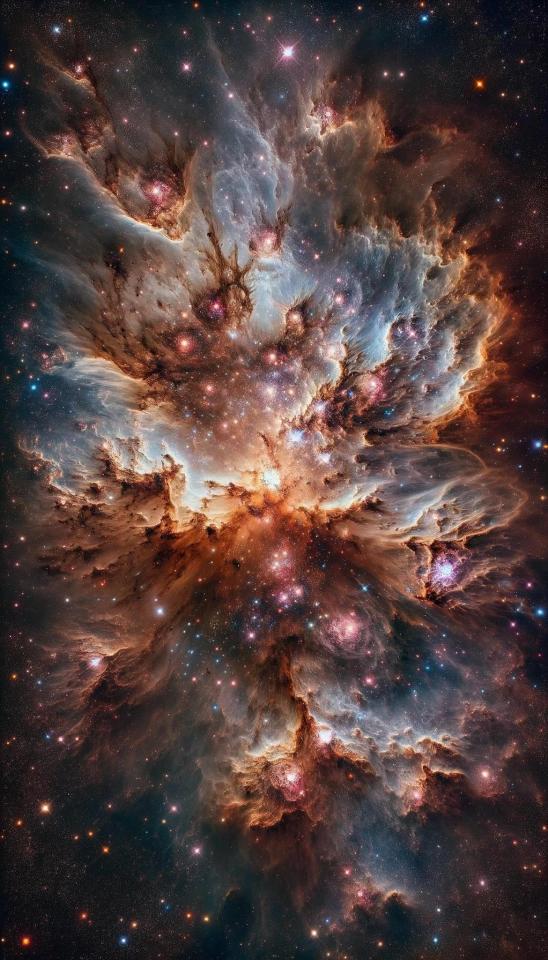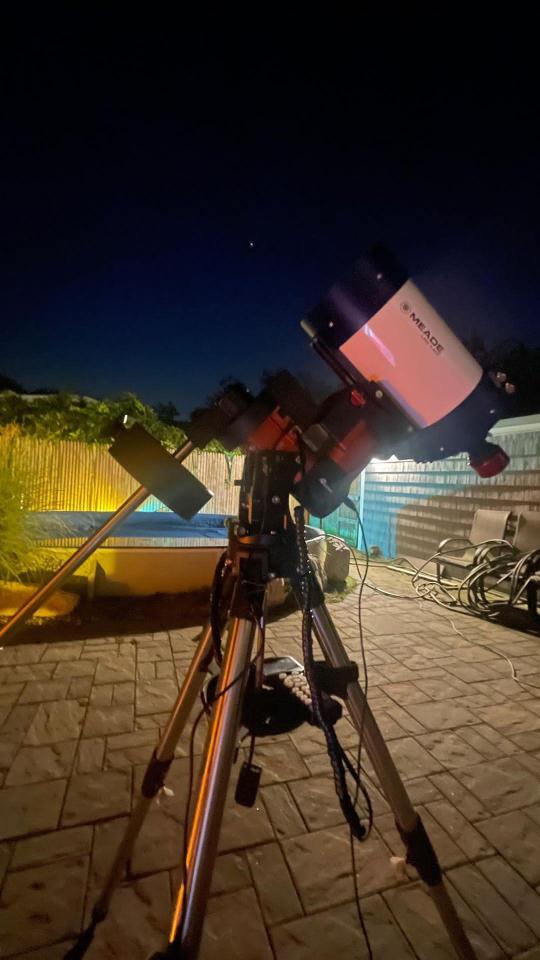M104, Sombrero

M104, Sombrero
More Posts from Dukeofwatts and Others

NGC 7635: Cosmic Bubble ©

Energetic light & winds from newborn stars in Carina Nebula ©

NGC 6914 in Cygus ©

Milky Way Falls, Chile

Multi-Observatory Views of M74.
Credit: ESA/Webb, NASA & CSA, J. Lee and the PHANGS-JWST Team; ESA/Hubble & NASA, R. Chandar.

Large Magellanic Fireworks by NASA's Marshall Space Flight Center

What is physics of the gravitational force
General relativity and
Classics mechanics has their definition on gravitation and formulae accordingly to the context
The Hypothetical theory ...
With the consideration of string theory and models. Gravitation is taken into consideration and account for explanation.
How the gravitation is spread in every dimension.
With theory representing no. of dimensions ( like bosonic, M theory, and others)
Gravitation is spread ....
Speaking of dimensions in 5 6 7 8 9 ... The whole lot of conspiracy theory on gravitation and mystical answers can be solved.
Gravity and the space time tend to behave proportionally.
The gravitational force is formed with 2 bodies with a mass. And therefore the physics of it relies on the 2 mass bodies with the respective constituent and variations that are happening.
For example. Take 2 stars or 2 dwarfs or space time with a considerate light years of galaxy in and around.
And the mass and density with X( Gev) and Y ( Gev), corresponding a gravitational force or imbibing a force in the space time with the formulation perceived with the general theory of relativity and classical mechanics.
From research point of view : the physics of the force may clearly interchange with the mass and density of a celestial bodies which is included and comprised under the space time.
#gravitational #celestialBodies #physicsForce #astrophysics #gtavity

Prepare for visual overload! Today, 19 images of nearby face-on spiral galaxies by the James Webb Space Telescope were released. This marks the first time we’ve observed these galaxies in high-resolution near- and mid-infrared light. What do they uniquely show?
The galaxies’ clearly defined spiral arms are brimming with millions of stars. Their centers may be filled with old star clusters or active supermassive black holes. And Webb has shown us where stars that haven’t yet fully formed are still encased in the gas and dust that feed their growth, like bright red seeds.
Webb’s new images are part of a large, long-standing project, the Physics at High Angular resolution in Nearby GalaxieS (PHANGS) program, and will be added to images and data from the Hubble Space Telescope, the Very Large Telescope’s Multi-Unit Spectroscopic Explorer, and the Atacama Large Millimeter/submillimeter Array. Now, astronomers around the world can examine these galaxies carefully in ultraviolet, visible, radio—and now near- and mid-infrared light.
Skip to the bottom of the page to look at each galaxy: https://webbtelescope.pub/3SxNSaU
ALT TEXT: Nineteen Webb images of face-on spiral galaxies are combined in a mosaic. Some appear within squares, and others horizontal or vertical rectangles. Many galaxies have blue hazes toward the centers, and all have orange spiral arms. Many have clear bar shaped-structures at their centers, but a few have spirals that begin at their cores. Some of the galaxies’ arms form clear spiral shapes, while others are more irregular. Some of the galaxies’ arms appear to rotate clockwise and others counterclockwise. Most galaxy cores are centered, but a few appear toward an image’s edge. Most galaxies appear to extend beyond the captured observations. The galaxies shown, listed in alphabetical order, are IC 5332, NGC 628, NGC 1087, NGC1300, NGC 1365, NGC 1385, NGC 1433, NGC 1512, NGC 1566, NGC 1672, NGC 2835, NGC 3351, NGC 3627, NGC 4254, NGC 4303, NGC 4321, NGC 4535, NGC 5068, and NGC 7496.





Think we're the only planet with life? 350mp quality. Remember to download to your phone and zoom in. Gets even more beautiful. Yes this is a nebula, yes I know there’s no life in a nebula. Of course these are not real photos. Duh!

Ancient orbs by Hubble Space Telescope / ESA
-
 mirrors-everywhere reblogged this · 2 months ago
mirrors-everywhere reblogged this · 2 months ago -
 carlottaragazzaloveeur reblogged this · 2 months ago
carlottaragazzaloveeur reblogged this · 2 months ago -
 carlottaragazzaloveeur liked this · 2 months ago
carlottaragazzaloveeur liked this · 2 months ago -
 i-am-me-and-you-are-not reblogged this · 3 months ago
i-am-me-and-you-are-not reblogged this · 3 months ago -
 myblueirony liked this · 3 months ago
myblueirony liked this · 3 months ago -
 augustaugeries reblogged this · 3 months ago
augustaugeries reblogged this · 3 months ago -
 pumpkinphrog liked this · 4 months ago
pumpkinphrog liked this · 4 months ago -
 apolloaphroditehypnoshades liked this · 6 months ago
apolloaphroditehypnoshades liked this · 6 months ago -
 salva-yourlife reblogged this · 7 months ago
salva-yourlife reblogged this · 7 months ago -
 heksmakt reblogged this · 7 months ago
heksmakt reblogged this · 7 months ago -
 crownedstoat liked this · 7 months ago
crownedstoat liked this · 7 months ago -
 jbrookspress reblogged this · 7 months ago
jbrookspress reblogged this · 7 months ago -
 nettopotter reblogged this · 7 months ago
nettopotter reblogged this · 7 months ago -
 gayestginger reblogged this · 7 months ago
gayestginger reblogged this · 7 months ago -
 gayestginger liked this · 7 months ago
gayestginger liked this · 7 months ago -
 hexuhgone reblogged this · 7 months ago
hexuhgone reblogged this · 7 months ago -
 lissabean liked this · 8 months ago
lissabean liked this · 8 months ago -
 bumblxbee liked this · 8 months ago
bumblxbee liked this · 8 months ago -
 knurdeh reblogged this · 8 months ago
knurdeh reblogged this · 8 months ago -
 dark-in-us liked this · 8 months ago
dark-in-us liked this · 8 months ago -
 necessarymonocle reblogged this · 8 months ago
necessarymonocle reblogged this · 8 months ago -
 hexuhgone reblogged this · 8 months ago
hexuhgone reblogged this · 8 months ago -
 akashicrecordtelevision-com reblogged this · 8 months ago
akashicrecordtelevision-com reblogged this · 8 months ago -
 akashicrecordtelevision-com liked this · 8 months ago
akashicrecordtelevision-com liked this · 8 months ago -
 uselessvalshit reblogged this · 9 months ago
uselessvalshit reblogged this · 9 months ago -
 uselessvalshit liked this · 9 months ago
uselessvalshit liked this · 9 months ago -
 midlifedream liked this · 9 months ago
midlifedream liked this · 9 months ago -
 zahourose liked this · 9 months ago
zahourose liked this · 9 months ago -
 inkandrhythm liked this · 9 months ago
inkandrhythm liked this · 9 months ago -
 wanderer-of-nature-and-dreams liked this · 9 months ago
wanderer-of-nature-and-dreams liked this · 9 months ago -
 drabglam liked this · 9 months ago
drabglam liked this · 9 months ago -
 dreamparadigm liked this · 9 months ago
dreamparadigm liked this · 9 months ago -
 pegstick1911 liked this · 9 months ago
pegstick1911 liked this · 9 months ago -
 kxngshxt liked this · 9 months ago
kxngshxt liked this · 9 months ago -
 opticalilluminance liked this · 9 months ago
opticalilluminance liked this · 9 months ago -
 lysjb03 liked this · 9 months ago
lysjb03 liked this · 9 months ago -
 namelessking007 liked this · 9 months ago
namelessking007 liked this · 9 months ago -
 tiredjoy reblogged this · 9 months ago
tiredjoy reblogged this · 9 months ago -
 white-striped-writer liked this · 9 months ago
white-striped-writer liked this · 9 months ago -
 bugsif liked this · 9 months ago
bugsif liked this · 9 months ago -
 islamprotestan-blog liked this · 9 months ago
islamprotestan-blog liked this · 9 months ago -
 gjkep16 liked this · 9 months ago
gjkep16 liked this · 9 months ago -
 vidfreak727 liked this · 9 months ago
vidfreak727 liked this · 9 months ago -
 annoyingdelicategalaxy reblogged this · 9 months ago
annoyingdelicategalaxy reblogged this · 9 months ago